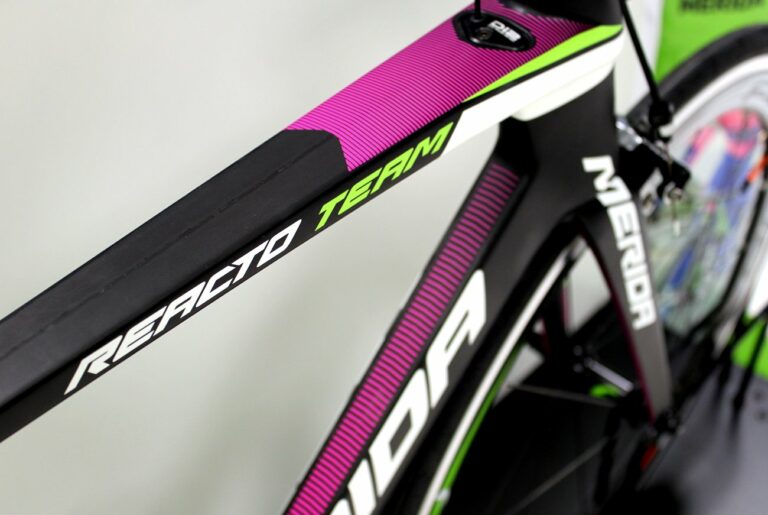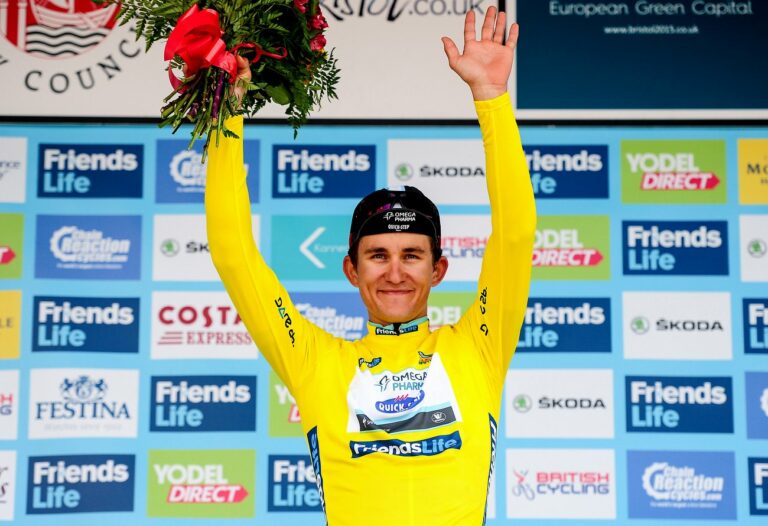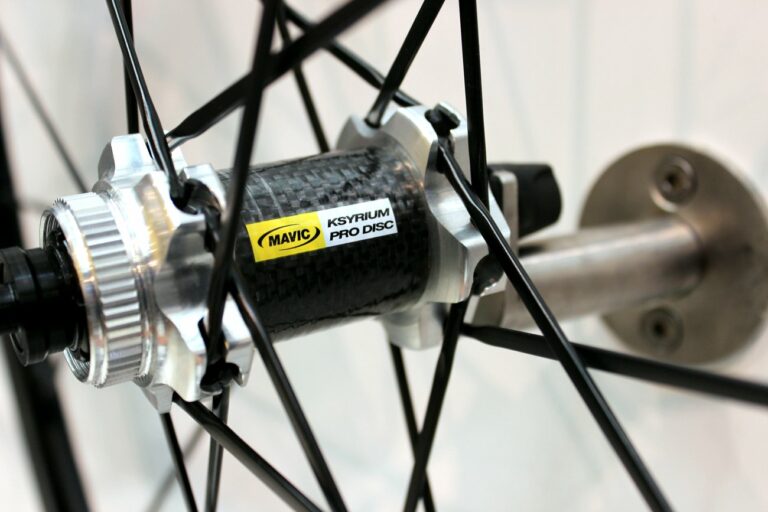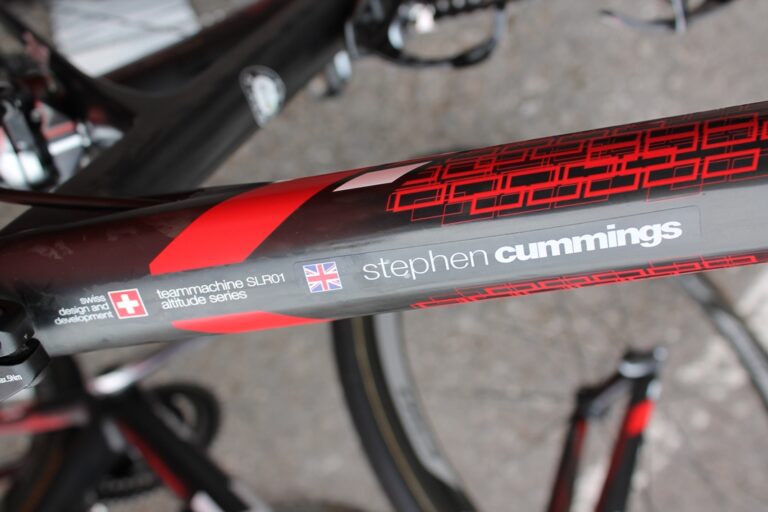Mike Cotty will be well-known to regular RCUK readers as dispenser of wisdom on all matters concerning training and the finer points of endurance riding.
There’s a reason we ask Mike to contribute his thoughts so regularly: his meticulous approach to equipment and preparation, combined with the fitness levels and knowledge of the high peaks of Europe required to ride there, non-stop and for days on end, makes his advice invaluable to the reader planning a more modest escapade in the same terrain.
Take his latest exploit as an example: a 1000km challenge, taken non-stop in a ride lasting 53 hours through the Dolomites, Swiss Alps, and Eastern Alps, taking in 21 mountain passes with 23,000m of ascent. Mike calls it the Road to Mont Blanc Challenge. Mavic, for whom he is an ambassador, call it “by far the biggest ride we have undertaken.” We’ll bring you the full story of Mike’s latest epic ride in one of our magazine-style ‘longform’ posts: a format to do justice to the scale of his endeavour. Check back soon for the full story of the Road to Mont Blanc.
In this article, we’ll take a close look at the equipment Mike chose for the task: a fascinating mix of cutting edge technology from the blue chip brands with whom he has worked closely, and less obvious, but equally intriguing choices. We’ll consider Mike’s positional set-up too.
“It’s always good to put components through their paces in the real world and The Road to Mont Blanc was a serious test for all of my kit, especially the electronic shifting,” Mike says. “While I was being battered by the rain my spare bike was being blasted on the roof of the car for hours on end. Neither systems skipped a shift and I have to say in the time that I’ve used Di2, it really has been faultless.”
If you’re interested in the wheels, lights, navigation equipment, and gear ratios required for a serious assault on the Alps, or views on supplementary tech debates like weight vs. aerodynamics, carbon and comfort, and the real world benefits (or otherwise) of wider tyres, from a man whose been there and done it (t-shirt expected soon), then read on. It’s time for a close look at the gear used by Mike on the Road to Mont Blanc.
Take two
Cotty has a long association with Cannondale, becoming transfixed as a junior by “the all conquering Volvo-Cannondale mountain bike team and the flamboyant Saeco red train lead by Mario Cipollini”. Cannondale’s ‘System Integration’ philosophy, designing frame and components together, appealed to his engineering background, and a 12-year career with the American brand followed.
He has ridden every Cannondale road bike since 2000: CAAD4, 5, 6, 7, 8, 9, 10, Six13, SystemSix, SuperSix and Synapse. “I used to race quite a bit so naturally spent most of my time on the SuperSix, refining my position over several years,” he says. “I ride in quite a low position so the race oriented geometry suits my biomechanics.” He packed two SuperSix Evo HiMods for his latest Alpine adventure: an MY2013 bike (pictured with red graphics) and its MY2014 successor (green). The set-up is identical.
Cotty’s experience with Cannondale’s road bikes is considerable. An impressive introduction involved riding to work for Cannondale in Basel on the CAAD5 that two-time Giro d’Italia winner, Paolo Salvoldelli, had ridden in the corsa rosa. (“Crashing it on tram lines on my first commute to work wasn’t part of my master plan,” he recalls, “but it did show me how tough that oversized aluminium frame was….sorry Paolo”). Purchase of his own Saeco Team Replica CAAD6 frame soon followed (Cotty doesn’t mention if Salvoldelli had demanded the return of his CAAD5), spec-ed with Cannondale’s now-signature Si Hollogram chainset. “I remember testing it out on a local 5km climb for the first time and punching through the gears like I was riding on the flat with this huge smile from ear to ear,” Cotty remembers. “Today everything has been so well refined that you just don’t get that pure rawness to a bike any more like you did back in the day.”
Cannondale is one of the cycle industry’s biggest players, but does not include an aero road bike in its range. While the Synapse endurance bike has several innovative features, and the radical silhouette of the Slice RS time trial bike is unmistakably ‘aero’, the SuperSix EVO racing bike is one built with conventionally shaped, rounded tubes. Cotty is far from alone in believing that lightness is the principal concern for the climber. “The main focus for the bike during a challenge like this, when I’m faced with over 20,000 metres of climbing, is low weight,” he says. Cannondale claim a 700g frame weight for the SuperSix Evo HiMod Dura-Ace frameset, and with it, the unofficial (and often disputed) title beloved of all manufacturers: “lightest production frame in the world”.
While those who earn their living from racing are concerned only by weight, Cotty, who takes on endurance ordeals like the Road to Mont Blanc in the name of sport, has a second concern: comfort. “I’d even go so far as saying that for me it’s more important than weight,” he says. “I mean, what’s the point in having a crazy light bike but being uncomfortable after a few hours when you’re expecting to be in the saddle for days? That just doesn’t make sense.” With that in mind, then, why a carbon chassis? The best metal frames offer an organic springiness, and while unlikely to trouble carbon in the weight stakes, are far from heavy. “Both the fork and rear triangle are designed to provide a degree of compliance,” Cotty says of his steed. if the frame is designed and laid up well then carbon can offer a very comfortable ride as well as being extremely efficient. The EVO HiMod is testament to that.”
Chain gang
We made a detailed inspection of the Canyon Aeroad CF steed of Cotty’s Mavic colleague, Nicolas Roux, on a recent visit to the French Alps. The Frenchman, the first man home in the 2012 and 2013 editions of L’Etape du Tour, is an advocate of oval chainrings. Not so Cotty, who after a lifetime on round rings has adopted an “ain’t broke, don’t fix it” approach to the subject.
His reasons are two-fold. “I’ve never had a problem with round rings and going to oval after so many years could throw up an unexpected knee pain or tweak which I don’t have at present,” he explains. And the second? “Switching to oval would mean fitting a completely different chainset than the Hollowgram SiSL2 that the EVO was designed around, which I feel would be a compromise in overall performance.” The WorldTour peloton continues to be split on the issue. Chris Froome’s radically shaped Osymetric rings are one of the distinguishing features of his Pinarello Dogma F8; Sir Bradley Wiggins, once an exponent of the same technology, has returned to conventional round rings. Cotty’s crank length is 172.5mm.
Lights, action…
Lights will provide a central consideration for any challenge that involves riding through the night. For Cotty, the most important concerns were power, burn times, and remaining cable free. While some adventure racers opt for sophisticated dynamo hubs capable of powering navigation systems as well as lights, the burn times offered from his USE lights, and the duration of his ride (circa 53 hours) meant that a dynamo was “never a consideration” for Cotty.
He packed three lamps from the Sussex firm, opting for a combination of bar-mounted Reflex and helmet-mounted Joystick for the foul conditions that greeted his first night in the saddle. “I set both up so I could run them on a mid level for around 10 hours,” he reveals. “The conditions were terrible and like this I knew that if I needed a boost in power I could easily flick to the higher setting.” Thereafter, he opted for the new Strada, with a beam pattern developed specifically for road use. While much debate surrounds the output required for riding on unlit roads, Cotty believes 500 to 600 lumens is sufficient – even for the pitch dark of an unlit Alpine descent. “In fact, one of the most exhilarating points in the whole ride was the San Bernardino descent in the dark,” he recalls. “You could see that no traffic was coming the other way so could really carve the bends like you’re on closed roads. Absolutely amazing!”
In the cockpit
USE is well known for its lighting range, but less so for finishing kit. Cotty has deployed a full helping of stem, bar, and seatpost from the Sussex brand on both bikes: a Summit carbon handlebar, Race stem, and Alien Carbon seatpost (in a 27.2mm diameter). His cockpit is comprised of a 42cm bar, mounted to a 120mm stem. His saddle is raised to 740mm. Frame size? 56cm. His preferred set-up has ben reached by “trial and error over time”.
Cotty has also worked with bike fitter Matt Gibbons at Spire Cycles, but the pair found very little to improve upon. “Apart from a very slight adjustment to my cleat position we basically left it untouched,” he recalls. Cotty does not dismiss the concept of the bike fit, however. “I think if you spend any conceivable amount of time on the bike then you find out relatively quickly if your position is working or not,” he says. “If you are having problems then it is definitely worth seeking advice from a specialist.” His own position has been “molded over time”, and informed by consciously relaxing on the bike, moving to a comfortable position and then noting his position on saddle and bars.
Comfort, comfort, comfort
Saddles from Italian brand, Fizik, dominate the WorldTour peloton and with Cannondale Pro Cycling on their client list, Cotty’s choice seems apt. More surprising, however, is his choice of Aliante – a perch that Fizik recommends for riders it describes as “bulls” – powerful riders such as Peter Sagan. The Italian team’s lightweight climbers – riders closer in physique and specialism to Cotty (“snakes” in Fizik-speak) – tend to use the Arione or Antares.
Cotty again returns to the theme of comfort, “the first and last priority” for a saddle, he says. He arrived at the Antares after a long search that involved “lots and lots of saddles”. Now each of his bikes has an Aliante. “The shape has served me well,” he says. “It’s a personal thing. What works for one may not work for another.”
The Navigator
Long-term Garmin users will be pleased to see an 800 on Cotty’s bars. While the electronics firm has released two subsequent models – the 810 and the 1000 – he has continued with the 800, choosing it over the new flagship for his Mont Blanc mission for what he believes is a longer-lasting battery (the absence of Bluetooth connectivity may be a factor here; both the 810 and 1000 use the protocol). Four Powermonkey Explorer external batteries provided supplementary power. Cotty loaded his epic route onto the device, but admits to knowing most of the climbs from experience. As important, were the 800’s data readouts – average, speed distance etc. – what Cotty describes as “the mental side of things” to “keep the brain alert.”
Note the absence of further electronica. He no longer uses a power meter, finding that he had spent too long looking at a box on his bars. “I get a lot more energy and inspiration from a beautiful mountain view than I do from fixating on a number on my handlebars,” he says. This may explain his moderate use of Strava, principally for training. “I do upload the occasional noteworthy ride but am not into smashing it week-in-week-out chasing KOM’s,” he says. “I did a lot of that type of riding when I was a kid and most of my training when I’m preparing for a big challenge is endurance based so doesn’t lend itself to the super high intensity efforts needed to be a Strava king.”
Keep Torqing
It’s hard to overstate the importance of a well-planned nutrition strategy for rides of the epic proportions undertaken by Cotty and his ultra-riding confederates. He prefers to keep things simple, pursuing a “little and often” strategy, carrying two bottles (water in one, Torq’s vanilla-flavoured carb drink in the other) and taking in food and fluids once and hour.
“In the beginning, I find I eat and drink more, but then over time I can really feel how my body is responding and I reach a point where everything feels like it’s in equilibrium,” he says. “It’s hard to explain but at that point I literally feel like I could keep going forever with a fairly minimal input.” How many bottles did he consume on the Road to Mont Blanc? Cotty’s tongue is firmly in his cheek. “Being awake for two days solid takes its toll on everyone and my support team weren’t counting,” he laughs. “Let’s say more than 20 and less than 50.”
Keep rolling
It comes as little surprise to find a Mavic ambassador rolling on the French brand’s wheels, but given that the Annecy wheelsmith is able to place quite a range at his disposal, Cotty’s selection is interesting. His choice for the Road to Mont Blanc? Cosmic Carbone Ultimates, a hoop he “reserves for really big days”, resisting the temptation to ride them regularly and lose the feeling that “this is insane!” Like most riders able to call upon the services of support car, Cotty rides on tubulars, slowing them with Yellow King pads from Swiss Stop – a compound he was able to test (perhaps against his wishes) in the torrential rain of the first night.
Cotty’s choice of tubular wheels raises another interesting topic. How confident would have been tackling the same impossibly mountainous parcours on conventional clincher wheels? Stories of incandescent and delaminating braking surfaces and exploding inner tubes are legion – and disturbing. Cotty has a simple answer: 90 per cent of his riding in Alps, Dolomites, and Pyrenees is made on Mavic’s Cosmic Carbone 40C full carbon clincher.
The CC40C has a lightweight aluminium insert (too light to use for an entire rim construction) to provide a ‘bed’ on which the tube rests. Below that is a foam core. The core and the aluminium insert are wrapped in carbon fibre, glued with a mix of resins. “The fact is, not all carbon resins and fibres are the same,” says Cotty. “If you’re going to ride with a carbon clincher in the mountains then make sure you pick a brand and model that really has done their homework and has the engineering knowledge and testing to back up their claims.”
Wider. Better?
Increasingly, tyres on performance bikes of all kinds – from WorldTour machinery to Trans Am steeds – are becoming wider. Cotty has a foot in both camps. The Cosmic Carbone Ultimates used on his Road to Mont Blanc ride were sheathed in Mavic’s Yksion Pro 23mm treads; his CC40C clinchers in 25mm rubber: Griplink (front) and Powerlink (rear). “In the real world this is where I feel the most benefit comes from having a wider tyre – comfort.”
The issue is not black and white, however. Cotty lists a range of variables – temperature, tyre pressure, road surface – that make it difficult even for a rider clocking several thousand kilometres a year to discern a noticeable difference. “My take is, and always will be, test your equipment extensively in advance,” he cautions. “Know how it performs in all conditions and have confidence in your choices.”
Cassette recorder
The relentlessly mountainous nature of the Road to Mont Blanc placed considerable emphasis on Cotty’s choice of cassette. With even the likes of Alberto Contador reaching for a 32-tooth sprocket for the steepest stages of the 2012 Vuelta a Espana, the temptation to choose the largest cassette possible must have been strong. Cotty concedes that reaching a decision “took a little time”. He eventually plumped for a 12-28 (Shimano’s Dura-Ace 9000) having tested the ratio in the mountains prior to the Road to Mont Blanc ride.
“If I stepped up to a 32 then I’d also need to change the rear mech to accommodate the larger sprocket,” he says. “In the end the conclusion I came to was if I needed a 32 then I would probably be faster walking. Sometimes having that get out of jail free card is a good thing but other times you can slip into it when the reality is that you may not need it. During the challenge there were definitely some very tough moments to overcome but I think the overall gearing 12-28 cassette with 34-50 chainset was the best set-up for my legs, going up and coming down.”
Live transmission
The Dura-Ace cassette is a match for the components. Cotty runs an electronic transmission from Shimano’s top tier. He admits to initial nervousness when switching from mechanical early last year, “but a couple of hours in the garage made me realise that it’s easier to set-up than a mechanical system and it basically needs no maintenance. I’ve literally done nothing at all in terms of gear adjustment since I set it up.”
A further advantage (and one listed by World Cycle Race winner, Mike Hall) is that electronic shifting makes fewer demands on the hands. “I’m literally just using the tips of my fingers to make the gear changes as opposed to making bigger hand movements that may involve some wrist twisting,” Cotty says, “which all add up over a 50+ hour ride. This is especially true when shifting from the small to big ring, one button push and it’s done.
“I suffer pretty badly in the cold losing dexterity in my extremities very quickly. In the past I’ve literally had to use my right hand to yank the left lever to try and get the chain back on to the big ring [what Hall and Ed Pickup jokingly call ‘the monster shift’] but with electronic shifting fortunately these woes are a thing of the past. In terms of battery life, at the end of the ride the indicator was still showing charge in the 50-75 per cent range, so plenty of juice left should I wish to ride back – which I didn’t fancy at the time.”
Get it together
Riders who travel as frequently as Cotty become used to boxing and unboxing bikes, and rebuilding them with a minimum of fuss. He estimates his time at stripping down an EVO and packing it in a bike case at 20 minutes. “I remove the top cap of the stem so that I can swing the stem and handlebars in to position. Of course wheels need removing. The only other things I take off are the seatpost/saddle and rear mech (to avoid the hanger getting bent).”
Long experience (and a few ‘horror stories’) means Cotty opts for a bike box rather than a bike bag. “I’m never sure just how heavy handed the baggage handlers are behind closed doors,” he says. Choosing a bike case involves a host of criteria (weight, capacity, convenience etc) but for our man in the Alps, protection for the bike is most important. His choice is Scicon’s Aerotech Evolution. “It’s compact which means getting it in and out of the car isn’t so bad,” Cotty says, “and the 360 degree wheels make manoeuvrability very easy which is something I’ve struggled with in the past when grappling with a kit bag as well.”





